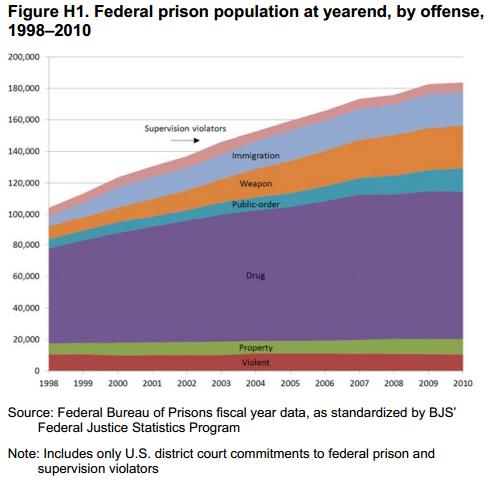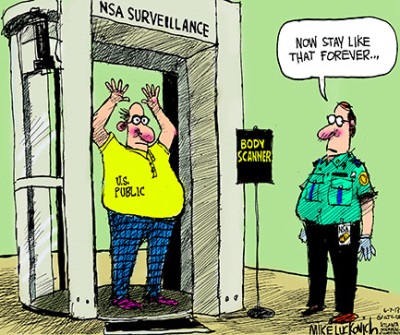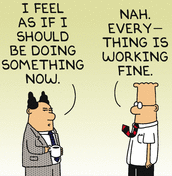Blockwatch grants - A big waste of money!!!!
Blockwatch grants - a government welfare program for cops???
These Blockwatch grants sound like a government welfare program for cops, in addition to brainwashing the kiddies into thinking that cops are wonderful!!!Phoenix Block Watch allocations draw questions
Youth programs get portion of crime-prevention money
by Connie Cone Sexton - Aug. 8, 2012 11:01 PM
The Republic | azcentral.com
Since 2008, more than $1.5 million of taxpayer money for Phoenix neighborhood crime prevention that could have been awarded to traditional Block Watch programs was given to programs designed to steer youths from crime, even though some question whether the latter is effective.
An Arizona Republic analysis of the past five years of Phoenix Neighborhood Block Watch grant awards found that more than one in five grants benefited youth programs, including Wake Up Clubs, sports or academic programs.
The money was used to take children to Lake Pleasant, the Arizona Science Center, Kartchner Caverns and other destinations as a reward for participating in a Phoenix police-led after-school program and for completing community-service projects.
Meanwhile, at least 15 traditional Block Watch grant applicants initially received no funding this year from the annual pool of $1.2 million, despite requests for items such as security lighting and cameras to catch graffiti vandals. However, at least three of those groups were later granted at least partial funding on appeal. The Phoenix City Council is expected to vote on final allocations in the next few weeks.
Crime-prevention specialists, while acknowledging the benefits of teaching children values like respect for police officers and community service, question whether the emphasis -- to deter children from a life of crime -- is effective. [So one of the things these Blockwatch grants do is brainwash the kiddies into worshiping cops! I bet Hitler and Stalin's Blockwatch grants did the same thing]
Voters created the Phoenix Neighborhood Block Watch Grant Program with Proposition 301, a sales-tax increase passed in 1993. Today, those who oversee it are divided over the best way to fight crime. For some, it's getting neighbors to monitor their streets, installing security lighting or Block Watch signs, using walkie-talkies for neighborhood patrols and holding community events to promote crime prevention. For others, it means continuing to invest in programs for youth.
Since 2008, more than $36,000 paid for youth sports at Granada East School in central Phoenix. In May, the City Council approved $7,600 for 2012-13 to pay coaches, referees, league fees and transportation for boys and girls to participate in basketball, soccer, baseball and softball. [Sounds like the money we were told was going to prevent crime is used for sports programs.]
In 2011, the Wilson Coalition neighborhood in southeast Phoenix received $9,800 to pay for after-school playground, library and gym supervisors for students at Wilson Elementary School.
Phoenix officials said there is anecdotal evidence that youth programs curb crime but could not provide research to back that up. [Translation - trust us, we know what we are doing even if it doesn't look like it.] Some members of the city Block Watch Oversight Committee question the investment.
"They sound like good programs, but do they really prevent crime? An argument can be made that it's not," said John Schroeder, a member of the City Council-appointed Block Watch Oversight Committee, which reviews grant applications and makes recommendations.
Every year, neighborhood groups in Phoenix may apply for up to $10,000 for a crime-prevention project. The Phoenix Police Department, which administers the Block Watch program, presents the committee's recommendations to the City Council. The newest round of grants were approved in May without discussion.
For the fiscal year that began July 1, about $224,000 has been designated for 24 Wake Up Clubs. That's 18.6 percent of total funding.
Of the 211 applications, 25 groups were initially unfunded. Among the rejections: Tatum Park Neighborhood Block Watch in northeast Phoenix, which requested $6,100 for projects that included solar lights for security; and Discovery at Villa de Paz in southwest Phoenix, which sought $9,800 for a flashlight camera to catch vandals. Funding questioned
Most of the youth money has supported about two dozen Wake Up Clubs.
The programs are held one hour a week after school and for about five weeks during the summer. Phoenix police officers serve as class leaders -- some making $60 or more an hour -- working with children on community-improvement projects or homework. [So the Blockwatch grants are also a jobs program for cops - some who are getting paid $60/hr which is about $120,000 a year]
During the past four years, each club was given $3,000 to $5,000 to pay for police officers to operate an individual program. Another $3,000 to $5,000 was awarded to fund admission and transportation costs to various attractions or to travel to community-service projects. The field trips, sometimes done in summer, are for children who participate in Wake Up Club meetings during the school year.
Phoenix police Officer Robin Ontiveros, who oversees the Wake Up Clubs, said she has seen the difference they make in the lives of children. "It's very effective because it's run by the Police Department. It's like a mentoring program." [Translation - I'm getting paid $60 and hour to brainwash kids into loving cops. I love my high paying do nothing job as a police officer]
Wake Up Clubs were started in 1995 by the department's Community Effort to Abate Street Crime, after a drive-by shooting of a 4-year-old in south Phoenix spurred residents to ask for help.
Critics say funding for Wake Up Clubs may benefit the community in the long run but hurt groups seeking money for crime-fighting programs. Schroeder questions the money going to youth programs and wants to see research and statistics on their impact.
The first year northeast Phoenix resident Jerry Cline was on the Block Watch Oversight Committee, he noticed all Wake Up Club applications were identical, seeking the same amounts of money to take kids to the same places. By the second year, he started asking questions. This year, he said there were a lot of "conversations" about whether the clubs should continue to be funded through Block Watch.
"When you get close to running out of money, you start thinking whether you should use the money to fund other projects," Cline said.
This year, for the first time since 2010, most Wake Up Club requests were not fully funded. Still, the oversight committee didn't make drastic cuts, except in the case of one school, Simpson Elementary, which last year sent kids on 30 field trips with Block Watch funds.
For fiscal 2012-13, Simpson's Wake Up Club was given $6,198 of their $10,000 request. Most clubs saw their $8,900 to $10,000 requests trimmed by only $100 or $200.
'Faith' and fairness
Phoenix Mayor Greg Stanton said he believes children's programs "pay long-term dividends" and said he takes the oversight committee's recommendations on "faith" that it knows what's best for the community. [Translation - Trust your government masters, we know what we are doing. Even if we don't have an facts to verify that we are producing results]
Judy Welch, captain of the Villa de Paz Block Watch, near Camelback Road and 102nd Avenue, disagrees. She said her group's request for a flashlight camera to catch graffiti violators was denied. She doesn't think it's right that funding instead went to Wake Up Clubs.
"What do they have to do with crime prevention?" she asked. "Block Watch money is about graffiti and vandalism. ... You'd have to have a lot of research into following these kids for years to find out if it helped."
Abby Dunton, coordinator for the Farmington Park Block Watch near 91st Avenue and Lower Buckeye Road, said her group was denied $10,000 for an audio, solar-powered, bilingual flashing-beacon system to help pedestrians at a busy crosswalk. During an appeal to the oversight committee last week, her project was approved.
For Cline, of the oversight committee, the question about Wake Up Clubs remains, "How does it deter crime?"
Early intervention
Crime prevention takes many forms, including Wake Up Clubs, said Phoenix police Officer Deb Iodice, the Block Watch Program coordinator. Officers talk to the kids about things like bullying and drugs. [More of those $60/hr jobs for cops to brainwash the kiddies????]
"You can see the wheels in their head turning," Iodice said. [Yea, and you can also see the dollars signs dancing around in the head of Phoenix police Officer Deb Iodice]
Iodice acknowledges that the city can't quantify how many crimes are prevented this way. "There's no great way to track it. I think that's a disservice, but we're here to educate people," Iodice said. [Yea, I think it great that I am getting paid $60 and hour for a job where I don't have to document that I am producing results]
She understands the criticism of using crime-prevention money for an after-school program. "Sometimes the program kind of gets a negative vibe because it costs a lot of money, but I think it's a fantastic program," Iodice said. [Yea, and she isn't even going to address the question of does it make sense to pay cops $60 and hour for programs that don't do anything other then fatten the wallets of the cops that give them.]
Daniel Morales, a prevention coordinator at Touchstone Behavioral Health, a non-profit organization that works to help young people lead productive lives, said getting kids to feel better about themselves can help keep them from underage drinking, drug use and getting into trouble. [Wile it is a non-profit organization, I bet Daniel Morales is getting paid big bucks for his part in the program. Just like the cops are]
Miguel "Mickey" Villarreal, 14, said he took his Wake Up Club experience in middle school seriously. "It helped me open up and be more accepting of others. And they teach you the consequences of drugs and getting into trouble. I've seen my older brother grow up and make the wrong decisions." [Translation - the police brainwashing worked on Miguel "Mickey" Villarreal]
Villarreal, now a freshman at Trevor Browne High School in west Phoenix, returned this summer to volunteer with a Wake Up Club.
Republic reporters Ofelia Madrid, Matt Dempsey and Samantha Bush contributed to this article.

Most people are in prison for victimless drug war crimes
After victimless drug war crimes most people are in prison for weapons violations

Victimless drug and gun crimes are why most people are in Federal prisons.
51 percent of federal prison inmates are there for victimless drug war crimes. In the above graph the second highest number of people are in federal prisons for weapons violations. The article didn't give a percent for weapons violations.
Eric Holder is cutting federal drug sentences. That will make a small dent in the U.S. prison population.
By Dylan Matthews, Published: August 12 at 2:50 pm
Populations at federal prisons have grown, but state prisons are the real problem.
Attorney General Eric Holder will announce Monday that the Justice Department will no longer charge nonviolent drug offenders with serious crimes that subject them to long, mandatory minimum sentences in the federal prison system. As my colleague Sari Horwitz explains, Holder “is giving new instructions to federal prosecutors on how they should write their criminal complaints when charging low-level drug offenders, to avoid triggering the mandatory minimum sentences.”
He’s also expected to call for the expanded use of prison alternatives, such as probation or house arrest, for nonviolent offenders and for lower sentences for elderly inmates. And he’ll endorse legislation by Sens. Dick Durbin (D-Ill.), Pat Leahy (D-Vt.), Mike Lee (R-Utah), and Rand Paul (R-Ky.) that would increase federal judges’ flexibility in sentencing nonviolent drug offenders.
The changes Holder wants will likely make a big difference at the federal level. But that won’t be enough to solve America’s mass incarceration problem.
Focusing on drug offenses is a smart way to go about reducing the federal incarceration rate. According to data in Why Are So Many Americans in Prison?, a new book by UC – Berkeley’s Steven Raphael and UCLA’s Michael Stoll, the most serious charge for 51 percent of federal inmates in 2010 was a drug offense. By comparison, homicide was the most serious charge for only 1 percent, and robbery was the most serious charge against 4 percent.
Tougher drug sentencing accounts for much of the increase in the incarceration rate. “If you go back and decompose what caused growth in the federal prison system since 1984, a large chunk can be explained by drug offenses, around 45 percent,” Raphael says. The other big category accounting for the federal increase is weapons charges, such as the five-year mandatory minimum faced by drug offenders caught with guns. Raphael estimates that that accounts for 18 to 19 percent of the increase.
There’s also been an increase in incarcerations on immigration charges, with the rest of the increase in other areas. But there’s no doubt that the biggest category of crime behind the increase in the federal incarceration rate is drugs. Easing up on drug sentencing would make a big dent.
The states are different
But the federal system isn’t really where the action is. The most recent Bureau of Justice Statistics (BJS) estimates find that there are 1,353,198 people incarcerated at the state level and 217,815 incarcerated federally. So about 13.9 percent of U.S. prisoners are in federal institutions; the other 86.1 percent are in state facilities. And most prisoners at the state level are not there for drug crimes.
In 2004, about 20 percent of state-level inmates were incarcerated on drug convictions, Raphael and Stoll find. Compared with the federal population, those incarcerated at the state level are much likelier to have committed violent offenses. In 2004, 14 percent were in prison for homicide, 9 percent for rape or sexual assault, 12 percent for robbery and 8 percent for aggravated assault. In 2011, it was much the same, according to BJS stats on state inmates serving sentences of a year or more. Fifty-three percent of inmates were in prison for violent offenses, 18.3 percent for property crimes, 10.6 percent for “public order” offenses such as drunk driving, weapons possession or vice offenses, and 16.8 percent for drug convictions.
Bjs state breakdown
Raphael and Stoll’s estimates of what’s accounting for the higher incarceration rates suggest that violent crimes are a big part of the state-level story. They find that harsher sentencing for violent offenders explains 48 percent of growth in incarceration rates, compared with about 22 percent attributable to increases in drug sentencing, and 15 percent due to increases in property crime and other sentences.
Then again, most people who go through state criminal justice systems do so on drug offenses. If you look at admission rates, rather than incarceration rates, at the state level, drugs become a much bigger part of the picture. For admissions, Raphael and Stoll find “relatively modest increases for violent crimes and property crimes and pronounced increases for drug offenses, parole violations, and other less serious crime.” And while higher admissions for less serious crimes with shorter sentences don’t affect the incarceration rate as much as increases in sentencing for serious crimes, they do dramatically affect the lives of those admitted, who have to find work as ex-offenders and live with the sundry restrictions states impose upon those who’ve served time.
It’s not hopeless
Holder is taking a fairly plausible approach to reducing the U.S. incarceration rate at the level where he can effect it. But that’s not the level that matters most, and if we were to get serious about reducing the state-level incarceration and admissions rates, we need to talk not just about reducing sentences for drug crimes but also about reducing prison admissions for drug offenses, and perhaps also lowering sentences for property crime and even violent offenses, particularly robbery.
There has been growing enthusiasm for reforming state sentencing laws, even backed by many conservatives. The American Legislative Exchange Council has joined the cause, creating model legislation for loosening state mandatory minimum laws. Especially if it’s not just limited to drug offenses, that kind of reform could greatly reduce the state incarceration rate.
The Emperor Wears No Clothes
I didn't know this but the book:The Emperor Wears No Clothesis on the web and you can read it for free right here. The book is by Jack Herer who recently died.
If you want a thousand good reasons to legalize, or re-legalize marijuana the book The Emperor Wears No Clothes has those reasons for you.
NSA Surveillance - Lady Liberty Raped

NSA Surveillance - TSA goons destroying America

Mixing government and religion in Mesa???
Mesa Mayor Scott Smith shovels the government welfare to Catholic Benedictine University
Mesa Mayor Scott Smith shovels the government welfare to Catholic Benedictine University in violation of the Arizona Constitution.
Mesa's 5th new college, Benedictine U., blesses, opens downtown campus
Posted: Wednesday, August 28, 2013 7:05 am
By Katie Mayer, Special to Tribune
A crowd of more than 250 gathered in downtown Mesa Tuesday for a blessing and ribbon-cutting in the building that was once Mesa’s Southside Hospital and is now home to Arizona’s first Catholic university.
The 44,000 square-foot contemporary renovated space, located at 225 E. Main Street, is the primary academic building for Benedictine University at Mesa and includes nine classrooms, a nutrition lab, computer lab, a chapel and faculty and administrative offices, along with empty space to grow.
On Sept. 3, students will step foot on campus and be the first to experience a learning style that university officials call “lecture-free classes.” University officials would not release the number of students starting classes, but said the number is changing, as enrollment is ongoing.
“When I came out here to Mesa, I had a big dream, but I didn’t dream big enough,” said Charles Gregory, executive vice president of Benedictine University. “It’s more than I could ever have comprehended.”
The ribbon-cutting event kicked off at 10 a.m. with a program that included a blessing from Diocese of Phoenix Bishop Thomas Olmsted. The bishop and priests then walked around the campus to bless the new building.
Many City of Mesa officials and university officials repeatedly mentioned the lengthy process of what started as a vision for a higher education institution in downtown Mesa and ended with a $10 million joint venture renovation that is now the new Benedictine University at Mesa campus.
Benedictine University President William Carroll said the journey was not “sweet talk” and involved “heavy duty negotiations.”
Mesa Mayor Scott Smith said that officials were not simply looking for a college to offer classes downtown, but that they wanted a university that would actually change the community.
“They saw that in many ways Benedictine University and Mesa were like twin sisters,” Smith said.
Smith said both the city and university are innovative and community-focused and that both are focused on investing in the future of generations to come.
“We are writing the next chapter in Mesa’s history,” said Mesa Councilman Chris Glover, whose grandfather had been a physician at Southside Hospital.
Glover delivered an emotional speech that began with a story about Jesus and ended with his calling the work with the university “one of the most intrinsically rewarding experiences of my life.”
A number of students, wearing the school’s red-colored shirts, attended the event and shared their excitement about starting college classes.
“This school has everything I was looking for,” said incoming freshman Dulce Perez, 18, of Mesa. “It’s small and I liked that it would be hands on.”
Steffen Spreng, who is 20 years old and transferring to the university from Mesa Community College, said he’s excited to “see the Christian Community growing in Mesa,” even though he is not Catholic.
“I like how it’s going to be small and another thing that really intrigued me is the lecture-free environment because I’m a hands-on learner,” Spreng said.
Benedictine University at Mesa Branch Campus President Michael Carroll said rather than passively sit and listen to lectures, students at the university will problem-solve, debate, assess and self-regulate.
Students will work on tablets, download lectures and attend all classes in a learning lab environment. Officials call the classroom style “flipped” because instead of reading a textbook and then looking at a problem, students will learn about a problem or issue first, and then conduct research to find a solution.
“By the time they graduate, they are going to have an electronic portfolio to show employers what they’ve accomplished,” Carroll said.
Benedictine University at Mesa is part of a larger effort city officials launched to attract colleges and universities to Mesa. The first institution, Albright College, opened earlier this year in Mesa’s Bank of America building and throughout August, three more institutions opened – Upper Iowa University, Wilkes and Westminster.
Grand Canyon University also announced in late July that it would begin building a campus in Eastmark in 2014.
The main Benedictine University campus is located in Lisle, Ill., which is 25 miles west of Chicago. Tuition for students attending Benedictine University at Mesa is $20,000 per year. For more information, go to www.ben.edu/mesa.
Mesa drug war cops bust Yerberia shops
It allows the cops to steal homes, cars and bank accounts!!!!
It's not about the drugs, it's about stealing homes, cars and bank accounts!!!!I have said the "war on drugs" is just a jobs program for cops before. And in this article it looks like that is true.
In addition to being a jobs program for cops the "war on drugs" is also a legal means for the police to steal property and use it for their agency.
Usually that is done with both Federal and state RICO laws. The RICO laws usually say the "property" is automatically guilty of what ever crimes the "property" is accused of committing, and the cops get to keep the stolen property unless the owners prove the "property" didn't commit the crime. Something which is usually impossible to do, or where the legal fees will be more then the property is worth.
That sounds like what happened in this article:
Landato said police seized homes, businesses, vehicles and bank accounts as part of their investigation.I suspect the cops were after the homes, cars and bank accounts that they stole more then anything else.
The article didn't mention ANYBODY that was harmed by the so called illegal drugs sold by the Yerberia stores. So I suspect the main point of the investigation was to allow the cops to steal the homes, cars and bank accounts of the people they were investigating.
Mesa police arrest 12 after year-long undercover investigation of prescription-drug ring
By Jim Walsh and Astrid Verdugo The Republic | azcentral.com Wed Aug 28, 2013 1:22 PM
A year-long undercover investigation by Mesa police led to the arrests of 12 people accused of illegally selling prescription drugs manufactured in Mexico to customers without prescriptions.
Police served 14 search warrants at herbal stores that cater to the Latino community, known as Yerberia shops. The search warrants were also served at the homes of people suspected of operating them, said Sgt. Tony Landato, a Mesa police spokesman.
Landato said the warrants were served at locations throughout the Valley, including Mesa, Phoenix, Tempe, Chandler and Scottsdale.
Police targeted the Los 3 Amigos and El Renacer Yeberia shops in the investigation, which focused on the illegal sale of prescription drugs manufactured in Mexico.
Landato said police seized homes, businesses, vehicles and bank accounts as part of their investigation.
The news about the investigation apparently spread quickly within the Hispanic community in Mesa. A clerk at a Mesa Yeberia, not involved in the investigation, said some of her customers told her about the arrests.
Landato said the Mesa police street crimes unit spearheaded the investigation, but that other agencies throughout the Valley assisted in serving warrants. He said the investigation is still underway and that the names of those arrested and the addresses of the shops are not being released at this time.
The suspects did not resist arrest and there was no violence, Landato said.
Sacrifice a politician????

No, the Gods didn't ask for the sacrifice of a politician, it just seemed like a really good idea
Files show NSA cracks, weakens Internet encryption
I have lots of questions about this!!!!1) I have always suspected that the NSA can use it's supercomputers to crack PGP and other public key encrypted messages. But I suspected it took some effort to decrypt the messages. Is that still true??? Or it is now a trivial inexpensive task for NSA to read messages that are encrypted with PGP and other public key??Source2) Just what are these "secret portals" or "hooks" that the NSA has created??? I suspect they are hooks that tell the encryption software used by HTTPS encryption to create encrypted data that is easily decrypted by NSA and other government agencies.
3) This shows that it is really not safe to put ANYTHING that you would like to keep secret from anybody, especially the government on the internet. Same goes for putting the data on telephone lines, radio waves or any public communication method.
Files show NSA cracks, weakens Internet encryption
By Michael Winter USA Today Thu Sep 5, 2013 4:51 PM
U.S. and British intelligence agencies have cracked the encryption designed to provide online privacy and security, documents leaked by Edward Snowden show.
In their clandestine, decade-long effort to defeat digital scrambling, the National Security Agency, along with its British counterpart, the Government Communications Headquarters (GCHQ), have used supercomputers to crack encryption codes and have inserted secret portals into software with the help of technology companies, the Guardian, the New York Times and ProPublica reported Thursday.
The NSA has also maintained control over international encryption standards.
As the Times points out, encryption "guards global commerce and banking systems, protects sensitive data like trade secrets and medical records, and automatically secures the e-mails, Web searches, Internet chats and phone calls of Americans and others around the world."
The NSA calls its decryption efforts the "price of admission for the U.S. to maintain unrestricted access to and use of cyberspace."
A 2010 memo describing an NSA briefing to British agents about the secret hacking said, "For the past decade, N.S.A. has led an aggressive, multipronged effort to break widely used Internet encryption technologies. Cryptanalytic capabilities are now coming online. Vast amounts of encrypted Internet data which have up till now been discarded are now exploitable."
The GCHQ is working to penetrate encrypted traffic on what it called the "big four" service providers ---Hotmail, Google, Yahoo and Facebook, the Guardian said.
Who needs back up files when you have the NSA????
Who needs backup files when the goons at the NSA, the FBI, Homeland Security, the TSA, the BATF, and DEA backing up all our files and emails for us for free.Don't think of it as the government flushing the Bill of Rights down the toilet!!!
Think of it as a free file backup service run by government goons!!!!

|

|

|
N.S.A. Able to Foil Basic Safeguards of Privacy on Web
Here is the full article from the New York Times on what the NSA or National Security Agency and their English buddies the GCHQ or the Government Communications Headquarters have been doing to read your encrypted emails and listen to your encrypted phone calls.The article says the NSA has been getting makers of ICs or integrated circuits to put back doors into their products so the NSA can read or listen to your data before the chip encrypts it.
The article says the NSA is also working with software vendors like Microsoft getting them to put back doors in their software products, again so the NSA can grab the data before the software encrypts it.
ASU mixing government and religion????
Mesa Mayor Scott Smith doesn't seem to be smart enough realized that building an LDS Chapel with tax dollars is an outrageous violation of both the Arizona Constitution and the First Amendment???I suspect he does, but could care less. After all he wants all those Mormon votes.
Groundbreaking marks addition of LDS Institute at ASU Polytechnic campus
Posted: Sunday, September 15, 2013 7:11 am
By Cecily Markland, Special to Tribune
Amidst the thousands of square feet of laboratory space at Arizona State University’s Polytechnic campus in East Mesa, one new building will be constructed to house religion classes and services of the Church of Jesus Christ of Latter-day Saints.
A groundbreaking ceremony for the LDS Institute of Religion building was held Sept. 9, with special guests and speakers, ASU President Michael Crow and Elder Neil L. Andersen of the Quorum of the Twelve Apostles of the LDS Church.
Also in attendance were mayors John Lewis of Gilbert and Gail Barney of Queen Creek, as well as Mesa vice mayor Alex Finter. Among the other elected officials attending were Maricopa County supervisors Steve Chucri and Denny Barney, state Reps. Justin Pierce and Douglas Coleman and state Sen. Bob Worsley.
Inclement weather forced the groundbreaking ceremony to be moved from the site on the northwest corner of Innovation Way North and South Sterling into an adjacent building on the campus, where approximately 200 people witnessed the presentations and a groundbreaking ceremony.
Crow spoke of the Polytechnic campus, noting it represented a combination of “ideals and ideas focused on education in a technical sense of mind and body.
“However,” he added, “We don’t focus on the spiritual.”
He added by working with faith-based organizations, such as the LDS Church on this particular project, “We can provide in one environment a complete and total educational experience an individual needs to put them on the right course.”
Crow added that in the 11 years since he began at ASU, he’s come to love many things about the university.
“It’s a fantastic university,” he said. “We are moving forward and making progress on many fronts.”
He counts the addition of the new Institute as a mark of that progress, as the “science, engineering and many natural sciences” offered on the campus will be combined “with everything this institute represents in terms of spiritual development.”
Andersen, representing the LDS Church, thanked ASU and Crow, and encouraged LDS educators, community members and elected officials in attendance to let others know about this new addition to what is offered at ASU.
“Share this with our members and our youth. Let them know that ASU is our friend,” Andersen said.
Referring to the LDS Institute building on ASU’s Tempe campus, Andersen added, “Dr. Crow took leadership to step forward and let us build a large Institute there.”
He said the new building on the Polytechnic campus is another example that, “ASU is very inclusive of us;” and, he added, for LDS students, when compared with Utah schools or other church schools, ”There is every bit as much reason and maybe more to stay and go to ASU.”
The new LDS Institute building will be constructed at what Elder Andersen called, “right at the crossroads of campus.”
Dave J. Gornik, of Emc2 Group Architects Planners, PC, is the lead architect on the project. Scott Lutes, also with Emc2, said the 25,000 square-foot building will include a chapel, three large classrooms, a recreation area and 11 smaller classrooms. Richard Clutter, another of the architects on the project, said the exterior has been designed of brick masonry, with two-tone brick and a flat roof so it will blend in with the other buildings on the campus.
Permits have been approved and the project is currently out for bid. Once construction begins, it is expected to take 11 months to complete.
The DEA, CIA, FBI and NSA were reading my email
Several times in the past when I was reading my email I got messages saying that my session was disconnected because my email was being read at another IP address.Of course I was paranoid and wonder was someone else really reading my email.
Of course my first guess was that it was one of my enemies like David Dorn.
And of course the second guess was that it was the government.
Of course now after Edward Snowden released his information that the government was spying on it that I realized that the government probably was involved with illegally reading my emails several times.
I also wondered why on Earth government would waste their time cracking my passwords.
Well again from the recently released information about government spying it turns out that the government wasn't cracking my passwords.
The NSA was simply twisting the arms of Google and Yahoo and getting them to give the government the passwords and email addresses of people the government considers to be criminals like me.
Of course the government's definition of a criminal seems to be any body that "thinks they have Constitutional rights" or anybody that expects the government to obey it's own laws.
And I guess by those definitions I am a criminal because I do think I have "Constitutional Rights" and I do expect the government to obey it's laws.
Of course I an not a criminal by the standards most normal people think of criminals being.
I don't steal stuff. I don't vandalize stuff. I don't destroy property.
Messy yard cops using photo radar to raise revenue???
Messy yard cops using photo radar to raise revenue???Reach Robert Robb at robert.robb@arizonarepublic.com or 602-444-8472.
Posted on September 23, 2013 3:46 pm by Robert Robb
Photo radar for signs?
I favor photo radar to enforce speed limits and red light laws. Violating these laws endangers other people and the cops can’t be everywhere.
Mesa, however, is considering using comparable technology to enforce sign codes and the like. This strikes me as busybody government at its worst.
The technology reportedly scans an area and identifies any non-complying signs or other comparable code violations. A test of the technology in New York found that 40 percent of objects scanned weren’t fully in technical conformance.
These codes, however, aren’t to protect public safety. They are to facilitate relationships between adjacent landowners, level competition and provide for some sense of community aesthetics. These aren’t meaningless public goods. But they aren’t life or death, either.
One of the selling points of the technology is that cities can take in a haul from fines for non-conformance. One suspects that’s the main, and perhaps only real, selling point.
City Council member Dennis Kavanaugh groused that Mesa was largely on a by-complaint method of enforcing its ordinances. But what’s wrong with that? If no one’s complaining, what’s the harm?
Previous articles on Mesa Mayor Scott Smith for Governor.